The Night Artemis Burned
How Fire, Infamy, and Faith Shaped the Fate of an Ancient Wonder
Hello, Dear Reader
On 21 July, a summer night in 356 BC, the Temple of Artemis in Ephesus, which was one of the Seven Wonders of the Ancient World, was consumed by fire. Herostratus, driven by a tragic desire for immortality through destruction, lit the blaze.
The story of this temple, its goddess, and its downfall is one of devotion, artistry, ingenuity, and human frailty.
Let’s walk through it together in today’s edition of Cultural Canvas.
Artemis
Artemis, goddess of the hunt, the moon, and untamed places, is the daughter of Zeus and Leto, twin of Apollo.
She was a paradox—fierce and protective, elusive yet nurturing. Guardian of women and childbirth, she kept her bow ready and her hounds close.
In Ephesus, a city thriving on Anatolia’s coast, Artemis was more than divine. Here, she merged with older local traditions, perhaps echoing Cybele, a maternal spirit tied to the rhythms of nature.
To the Ephesians, Artemis was a sacred presence. Not just honored, but loved. Her temple stood as a testament to that devotion—a monument striving toward eternity.
The Temple
Built around 550 BC with the patronage of King Croesus of Lydia, the Artemision was an architectural triumph.
Imagine a sprawling structure, 115 meters long and 46 wide, crowned with 127 columns of marble, each nearly 18 meters tall, many engraved with delicate reliefs.
Within, a statue of Artemis, likely formed of gold, ivory, or ebony, held silent court among incense and offerings.
Pilgrims arrived with gifts, artists found inspiration under its shadow, and commerce thrived around its steps. Even Pliny the Elder (a Roman polymath), centuries later, counted it among the great wonders of the world.
The temple proved what humans could build when guided by faith, artistry, and awe—until one fire changed everything.
Cultural Canvas is a reader-supported publication. Every like, comment, share, and donation helps us grow—your support truly matters!
Herostratus’s Quest for Infamy
On July 21, 356 BC, some say it was the very night Alexander the Great was born, that Herostratus lit the flame. His motive wasn’t piety or protest, but a tragically human impulse: the hunger to be remembered.
The temple’s wooden core and flammable adornments made it vulnerable. And so, the fire took hold.
Ephesus mourned and in response, they banned Herostratus’s name, hoping silence would erase him. But history in some cases resists forgetting. Writers like Strabo and Plutarch recorded his infamy, and his name endured. Still, the Ephesians did not surrender to grief. They rebuilt the temple, grander than before, with support from across the Greek world. It stood for centuries, until Gothic raids in 262 AD marked its decline.
Today, near modern Selçuk, only scattered stones remain—a quiet memory of grandeur.
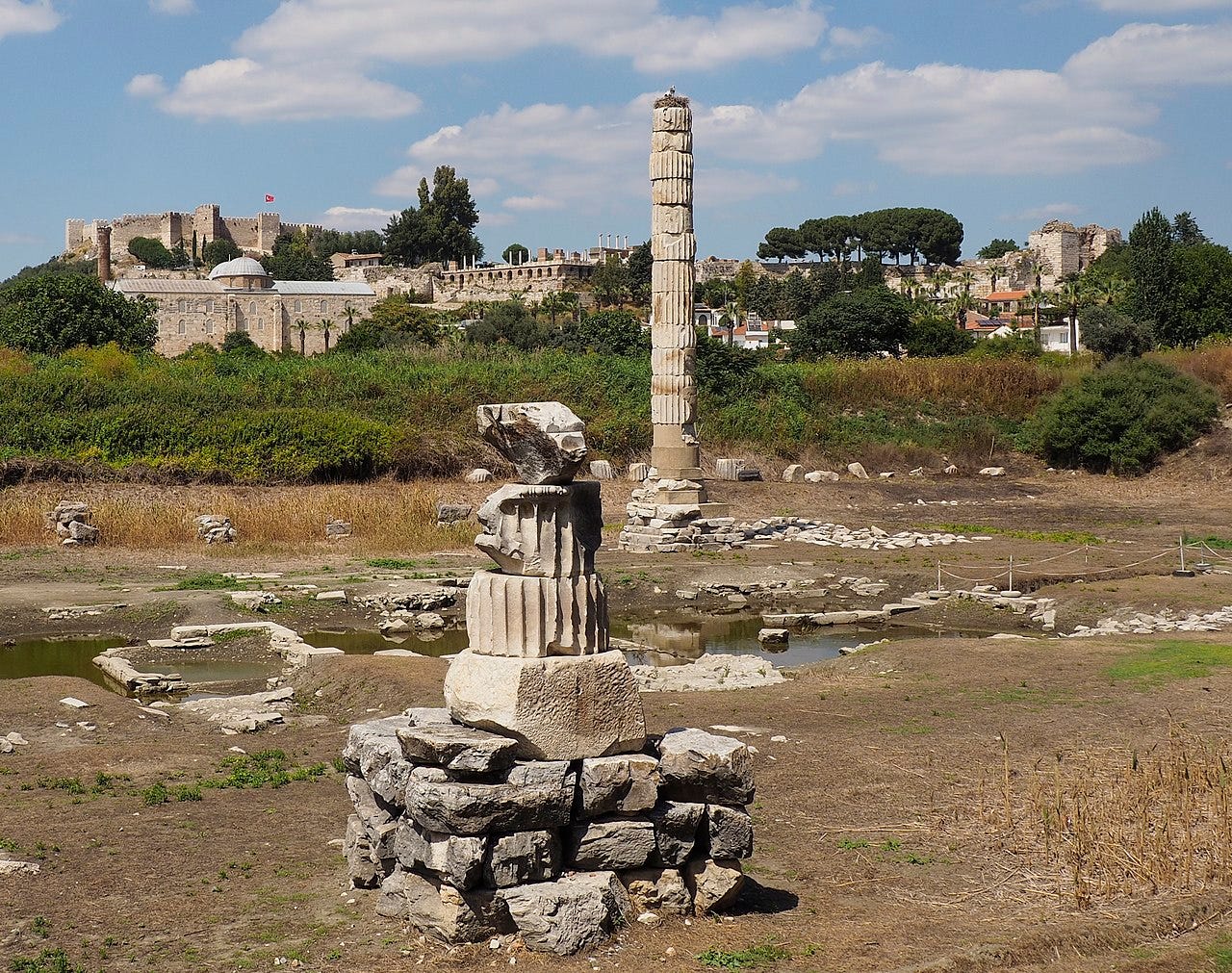
A Story That’s Remembered
Artemis teaches the tension between strength and gentleness, as well as the interplay between wilderness and sacredness. Her temple shows what we can build when touched by purpose and wonder.
And Herostratus warns us that the thirst for fame, unmoored from meaning, can hollow what’s sacred.
It’s a story of devotion, destruction, and endurance—a human story, as timeless as moonlight.
I hope you enjoyed today’s edition. Though shorter than usual, this felt like a story worth sharing—one many of you may already know, yet its depth and its lesson remain enduringly powerful.
I also want to let you know we’re officially in summer mode: lighter, more digestible editions until September. With that, I wish you a fabulous week ahead—and I’ll see you on Thursday.
Stay curious, and always in search of beauty.
With wonder,
Muse
Thank you for being part of Cultural Canvas! If you love what we do, consider supporting us to keep it free for everyone. Stay inspired and see you in the next post!


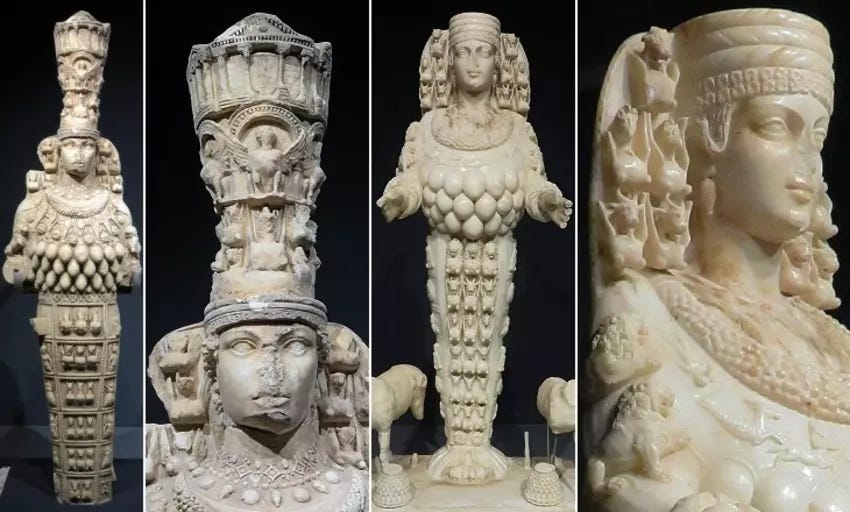
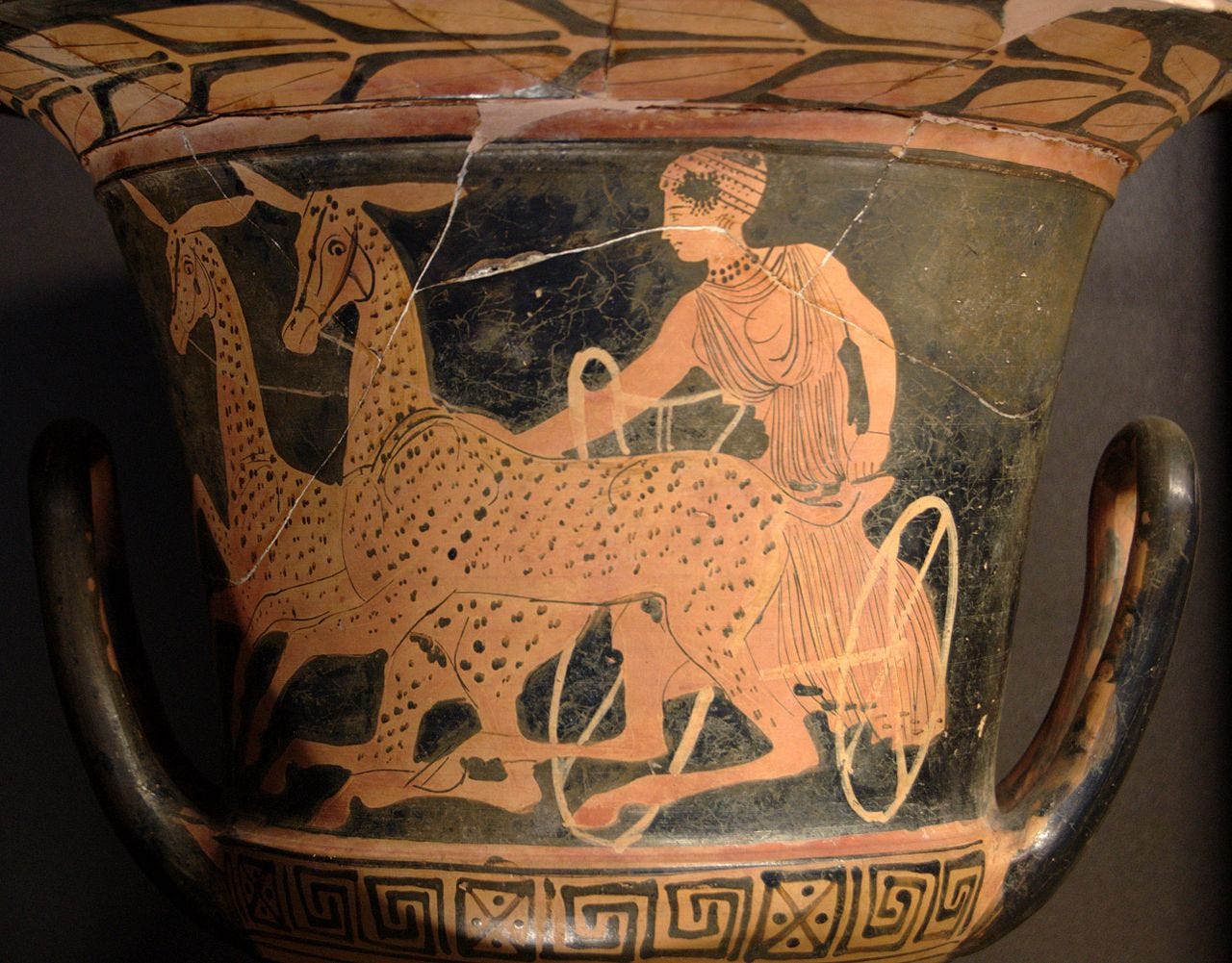
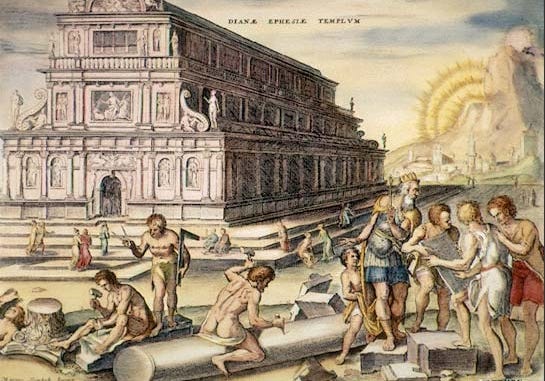

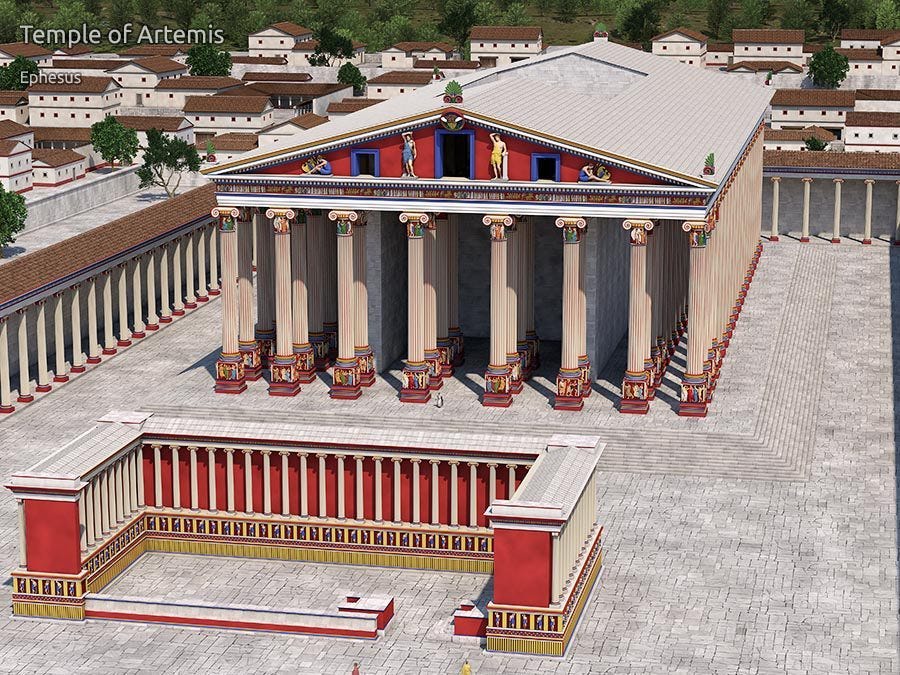
I was unaware of this piece of History. Thank you for sharing
Wonderful piece! I have been fascinated by Artemis for many years.
Your work inspires me every day, like jewels scattered among the grim evidence of our own disintegration.